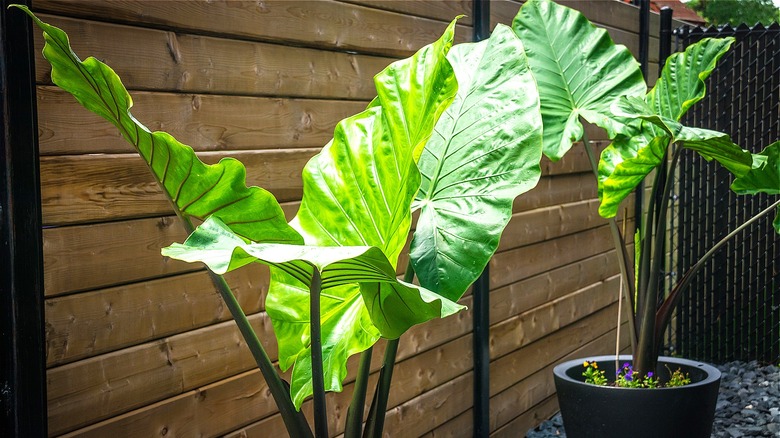TikToker Shares A Genius Way To Get The Most Out Of Your Elephant Ear Plants
If you're looking to add more greenery to your yard, you don't necessarily have to run out to your local garden center for new plants and flowers just yet. If you have elephant ear plants (Colocasia, Alocasia, Xanthosoma, Remusatia spp.) growing already, you could divide them and then plant a piece (or more) elsewhere in your outdoor space. Per TikTok, all you have to do is cut down to the bulb of the plant and transplant the cut-off piece to a new location.
For this divide-and-transplant method, ideally, you'll want to cut from an elephant ear that's large enough that a missing section won't be (too) noticeable. Known for their impressive heart-shaped leaves, you'll want to be extra careful when cutting away at the delicate perennial's root. Further, when transplanting elephant ears, it's important to do so during a time of year in which they'll thrive: mid to late spring or fall.
Dividing elephant ear plants for replanting
As demonstrated by TikToker @twisted.liss, you can "copy and paste" your elephant ear plant; that is, you can divide your thriving plant and transplant a piece of it to a new spot in your home or yard. To do so, simply cut at the bulb of your chosen elephant ear plant using a tool like a hori hori knife.
Next, in the new location (whether in your yard or a planter), dig a hole about 6 inches deep. Place your cut-off plant piece in the hole, and consider adding plant food like @twisted.liss does before filling in around the plant with soil. If you don't have plant food on hand, you could make your own out of a mixture of oatmeal and cinnamon.
Once the hole is covered, soak the newly transplanted elephant ear with water to help establish its roots. Note, that you might want to wear gloves when working with elephant ears as the plant is known to cause an allergic reaction in some people (contact dermatitis) due to the presence of calcium oxalate crystals.
